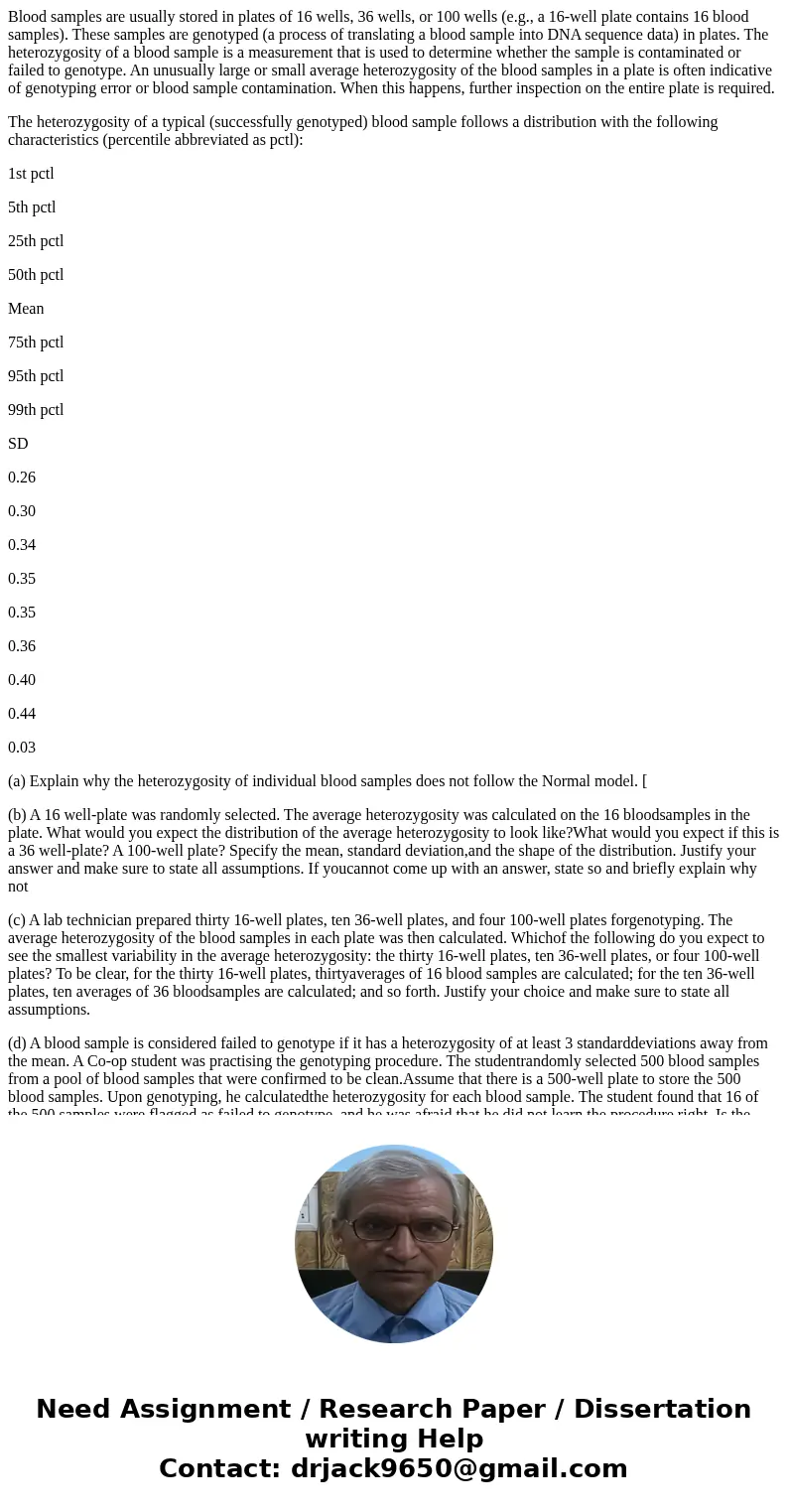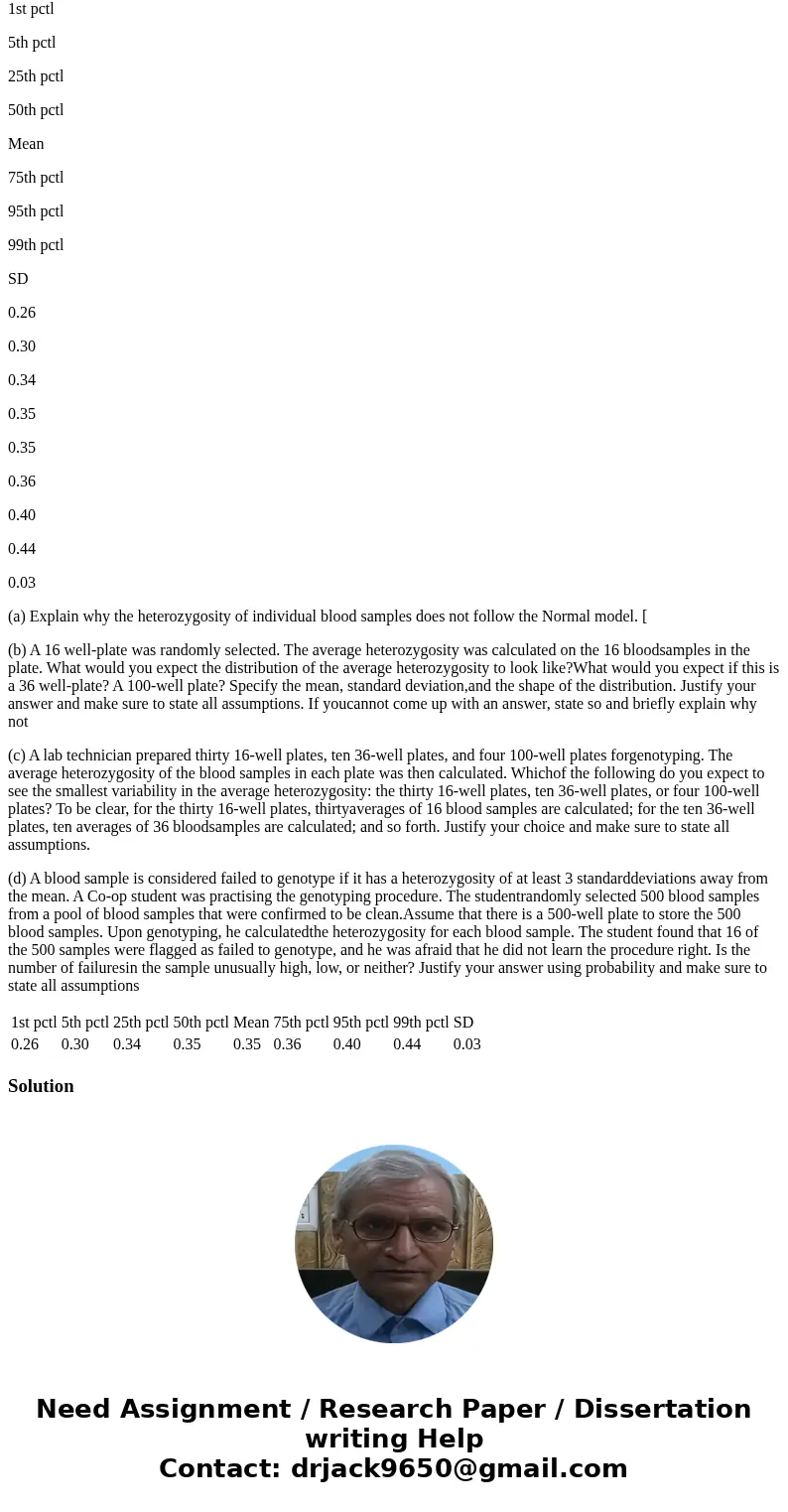Blood samples are usually stored in plates of 16 wells 36 we
Blood samples are usually stored in plates of 16 wells, 36 wells, or 100 wells (e.g., a 16-well plate contains 16 blood samples). These samples are genotyped (a process of translating a blood sample into DNA sequence data) in plates. The heterozygosity of a blood sample is a measurement that is used to determine whether the sample is contaminated or failed to genotype. An unusually large or small average heterozygosity of the blood samples in a plate is often indicative of genotyping error or blood sample contamination. When this happens, further inspection on the entire plate is required.
The heterozygosity of a typical (successfully genotyped) blood sample follows a distribution with the following characteristics (percentile abbreviated as pctl):
1st pctl
5th pctl
25th pctl
50th pctl
Mean
75th pctl
95th pctl
99th pctl
SD
0.26
0.30
0.34
0.35
0.35
0.36
0.40
0.44
0.03
(a) Explain why the heterozygosity of individual blood samples does not follow the Normal model. [
(b) A 16 well-plate was randomly selected. The average heterozygosity was calculated on the 16 bloodsamples in the plate. What would you expect the distribution of the average heterozygosity to look like?What would you expect if this is a 36 well-plate? A 100-well plate? Specify the mean, standard deviation,and the shape of the distribution. Justify your answer and make sure to state all assumptions. If youcannot come up with an answer, state so and briefly explain why not
(c) A lab technician prepared thirty 16-well plates, ten 36-well plates, and four 100-well plates forgenotyping. The average heterozygosity of the blood samples in each plate was then calculated. Whichof the following do you expect to see the smallest variability in the average heterozygosity: the thirty 16-well plates, ten 36-well plates, or four 100-well plates? To be clear, for the thirty 16-well plates, thirtyaverages of 16 blood samples are calculated; for the ten 36-well plates, ten averages of 36 bloodsamples are calculated; and so forth. Justify your choice and make sure to state all assumptions.
(d) A blood sample is considered failed to genotype if it has a heterozygosity of at least 3 standarddeviations away from the mean. A Co-op student was practising the genotyping procedure. The studentrandomly selected 500 blood samples from a pool of blood samples that were confirmed to be clean.Assume that there is a 500-well plate to store the 500 blood samples. Upon genotyping, he calculatedthe heterozygosity for each blood sample. The student found that 16 of the 500 samples were flagged as failed to genotype, and he was afraid that he did not learn the procedure right. Is the number of failuresin the sample unusually high, low, or neither? Justify your answer using probability and make sure to state all assumptions
| 1st pctl | 5th pctl | 25th pctl | 50th pctl | Mean | 75th pctl | 95th pctl | 99th pctl | SD |
| 0.26 | 0.30 | 0.34 | 0.35 | 0.35 | 0.36 | 0.40 | 0.44 | 0.03 |
Solution


 Homework Sourse
Homework Sourse